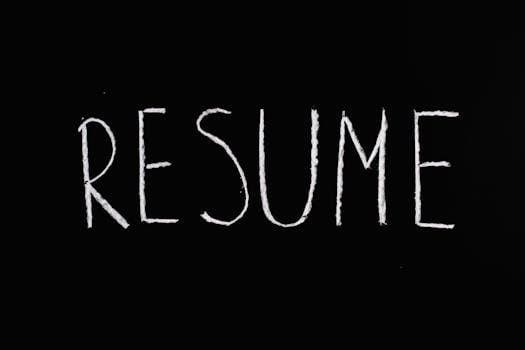Article Plan⁚ Sign Language Dictionary PDF
This article explores the world of sign language dictionaries in PDF format, offering resources for learning American Sign Language (ASL)․ It covers free online dictionaries, downloadable PDFs, mini dictionaries for beginners, handshape dictionaries, and bilingual options, like Spanish․ ASL apps and the Gallaudet Dictionary are also discussed․
Sign language dictionaries are invaluable resources for anyone learning or working with sign languages, particularly American Sign Language (ASL)․ These dictionaries serve as comprehensive guides, translating spoken or written words into their corresponding sign representations․ They go beyond simple translations, often including illustrative images or videos demonstrating the correct execution of each sign․ This visual component is crucial, as sign language relies heavily on handshapes, movements, and facial expressions to convey meaning․
A well-structured sign language dictionary can accelerate the learning process, allowing users to build their vocabulary and improve their comprehension of signed communication․ For beginners, these dictionaries provide a foundation for understanding basic signs and grammatical structures․ Advanced learners can utilize them to expand their knowledge of more complex signs and nuances of the language․ The availability of dictionaries in PDF format offers portability and accessibility, allowing users to study and reference signs offline, anytime, anywhere․ Moreover, specialized dictionaries focus on specific aspects of ASL, such as handshapes, or cater to bilingual learners, bridging the gap between sign language and spoken languages like Spanish․
Availability of Free Online ASL Dictionaries
The digital age has significantly increased access to language learning resources, including American Sign Language (ASL)․ Fortunately, numerous free online ASL dictionaries are readily available, offering a convenient and cost-effective way to learn and practice sign language․ These online dictionaries often feature extensive databases of signs, complete with video demonstrations, detailed descriptions, and usage examples․ This multi-modal approach to learning enhances comprehension and retention․
Many of these free resources are supported by educational institutions, non-profit organizations, and dedicated individuals committed to promoting sign language accessibility․ Some online dictionaries allow users to search for signs by keyword, while others organize signs by category, such as common phrases, greetings, or specific themes․ Furthermore, certain platforms incorporate interactive features like quizzes and flashcards to reinforce learning and track progress․ However, users should be mindful of the source’s credibility and ensure the signs are presented accurately and align with established ASL standards․ By leveraging these free online resources, individuals can embark on their ASL journey without financial barriers․
Downloadable PDF ASL Dictionaries
Beyond online resources, downloadable PDF ASL dictionaries offer a tangible and portable alternative for sign language learners․ These PDFs provide a convenient way to access sign language information offline, making them ideal for studying in areas with limited internet connectivity or for those who prefer a physical reference․
Downloadable PDF ASL dictionaries often contain a comprehensive collection of signs, neatly organized and indexed for easy navigation․ Many include illustrations or diagrams of the handshapes, movements, and facial expressions associated with each sign․ Some advanced PDFs also incorporate cultural notes, grammatical explanations, and tips for effective communication․
It’s important to note that while some PDF dictionaries are available for free, others may require a purchase․ When selecting a PDF dictionary, consider the author’s credentials, the scope of the content, and the clarity of the illustrations․ Look for dictionaries that clearly depict handshapes and movements, and that provide accurate and up-to-date information on ASL usage․ These downloadable resources can be a valuable asset for learners seeking a structured and accessible reference guide․

Mini ASL Dictionaries for Beginners
For those embarking on their ASL journey, mini ASL dictionaries are invaluable starting points․ These compact resources offer a curated selection of essential signs, focusing on everyday vocabulary and basic conversational phrases․ Their smaller size makes them portable and less overwhelming than comprehensive dictionaries, perfect for quick reference and on-the-go learning․
Mini ASL dictionaries often prioritize clarity and simplicity․ They typically feature clear illustrations or photographs of each sign, accompanied by concise definitions and usage examples․ Some even include fingerspelling charts and basic grammatical explanations to aid beginners in understanding the fundamentals of ASL․
These dictionaries are particularly useful for learning introductory greetings, common verbs, adjectives, and essential nouns․ They act as a springboard, building a foundational vocabulary before delving into more complex or specialized signs․ Many mini dictionaries are available as downloadable PDFs, providing easy access to core ASL vocabulary anywhere, anytime․ With their user-friendly format and focused content, mini ASL dictionaries empower beginners to confidently start communicating in sign language․
American Sign Language Handshape Dictionaries
American Sign Language handshape dictionaries offer a unique approach to sign lookup, categorizing signs based on the specific hand configuration used․ This method proves particularly useful when you know the handshape of a sign but have forgotten its meaning․ By focusing on handshapes, these dictionaries provide an alternative to searching by English gloss, which can be challenging if you don’t know the corresponding English word․
These dictionaries are structured around the fundamental handshapes in ASL, grouping signs that share a common hand configuration together․ This allows users to browse signs with similar handshapes, aiding in recognition and recall․ They are valuable tools for both learners and fluent signers seeking to expand their vocabulary or remember forgotten signs․
Furthermore, handshape dictionaries often include detailed illustrations or photographs of each handshape, ensuring clarity and accuracy․ They may also provide information on movement, location, and palm orientation, further distinguishing signs with similar handshapes․ Some handshape dictionaries are available as downloadable PDFs, offering a convenient resource for studying and practicing ASL․
Bilingual Sign Language Dictionaries (e․g․, Spanish)
Bilingual sign language dictionaries bridge the communication gap between different languages, providing translations and interpretations of signs in two languages․ For example, a Spanish-ASL dictionary would offer ASL signs with their corresponding Spanish translations․ These dictionaries are invaluable resources for individuals who are bilingual or learning both a spoken language and sign language simultaneously․
These dictionaries often include visual representations of the signs, alongside written explanations in both languages․ They may also incorporate cultural notes, highlighting differences in sign usage or cultural nuances between the two language communities․ The Spanish Sign Language Dictionary (DILSE) stands out as an early example of a truly bilingual electronic dictionary, offering translations between Spanish Sign Language and Spanish․
Bilingual dictionaries facilitate communication and understanding between diverse groups, promoting inclusivity and accessibility․ They serve as essential tools for educators, interpreters, and anyone working with bilingual deaf individuals․ They are also helpful in cross-cultural settings and international collaborations․

ASL Dictionary Apps for Android

Android devices offer a plethora of ASL dictionary apps, providing convenient and portable access to sign language resources․ These apps range from basic dictionaries with common signs to comprehensive tools with advanced features like video demonstrations, quizzes, and customizable settings․ Many are free or offer a free trial period, making them accessible to a wide range of users․
Some apps, like the “Sign Language Pro” app, are designed by ASL professors and include a vast library of signs․ The “ASL Dictionary App” allows users to translate English words into ASL signs, facilitating communication and learning․
These apps are invaluable for students, educators, and anyone interested in learning or improving their ASL skills․ They provide a dynamic and interactive way to explore the nuances of sign language․ They often include search functions, allowing users to quickly find the signs they need․ Many also offer offline access, making them useful in situations where internet connectivity is limited․ The convenience and accessibility of these apps have revolutionized the way people learn and use ASL․

The Gallaudet Dictionary of American Sign Language
The Gallaudet Dictionary of American Sign Language stands as a cornerstone resource in the field of sign language education and research․ Created by a distinguished board of experts, including renowned ASL linguist and poet Clayton Valli, this dictionary is widely recognized for its comprehensiveness and authority․
It offers in-depth coverage of ASL signs, including their meanings, variations, and cultural context․ It is more than just a list of signs; it provides a rich understanding of the language and its use within the Deaf community․ The dictionary often includes detailed explanations of the linguistic principles underlying ASL, such as phonology and morphology․
The Gallaudet Dictionary is an invaluable tool for students, teachers, interpreters, and researchers․ Its meticulous attention to detail and its commitment to representing the language accurately have made it a trusted resource for generations․ Access to this dictionary, even in part through excerpts or related materials in PDF format, can significantly enhance one’s understanding of ASL and Deaf culture․ It represents a legacy of scholarship and a dedication to preserving and promoting American Sign Language․
SignWriting and its Relation to Dictionaries
SignWriting is a written system for sign languages, aiming to transcribe signs visually, which contrasts with traditional dictionaries relying on glosses (written words representing signs)․ While not a dictionary itself, SignWriting plays a role in expanding dictionary capabilities․ By visually representing signs, SignWriting can offer greater precision compared to word-based definitions․
Imagine a sign language dictionary that includes SignWriting transcriptions alongside video examples and glosses․ This would provide users with a multi-faceted understanding of each sign, catering to different learning styles․ SignWriting could also facilitate the creation of more comprehensive and searchable sign language databases․
Despite being 51 years old in 2025, SignWriting’s adoption in dictionaries is still evolving․ Over time, there may be more integration․ Some online resources use SignWriting to represent signs, supplementing video or image-based dictionaries․ SignWriting has the potential to contribute to sign language documentation and preservation efforts, offering a lasting record of signs and their variations․ Its inclusion in dictionaries could make learning sign language more accessible and effective․